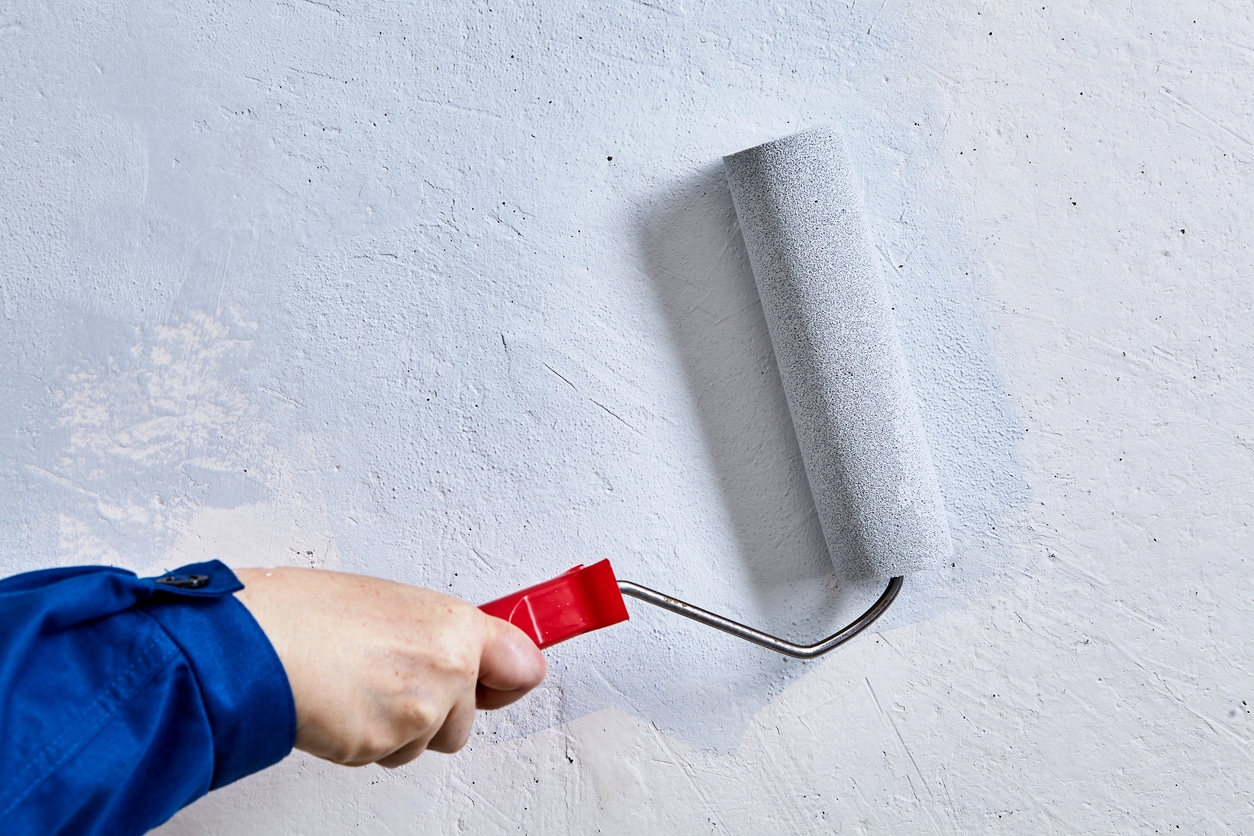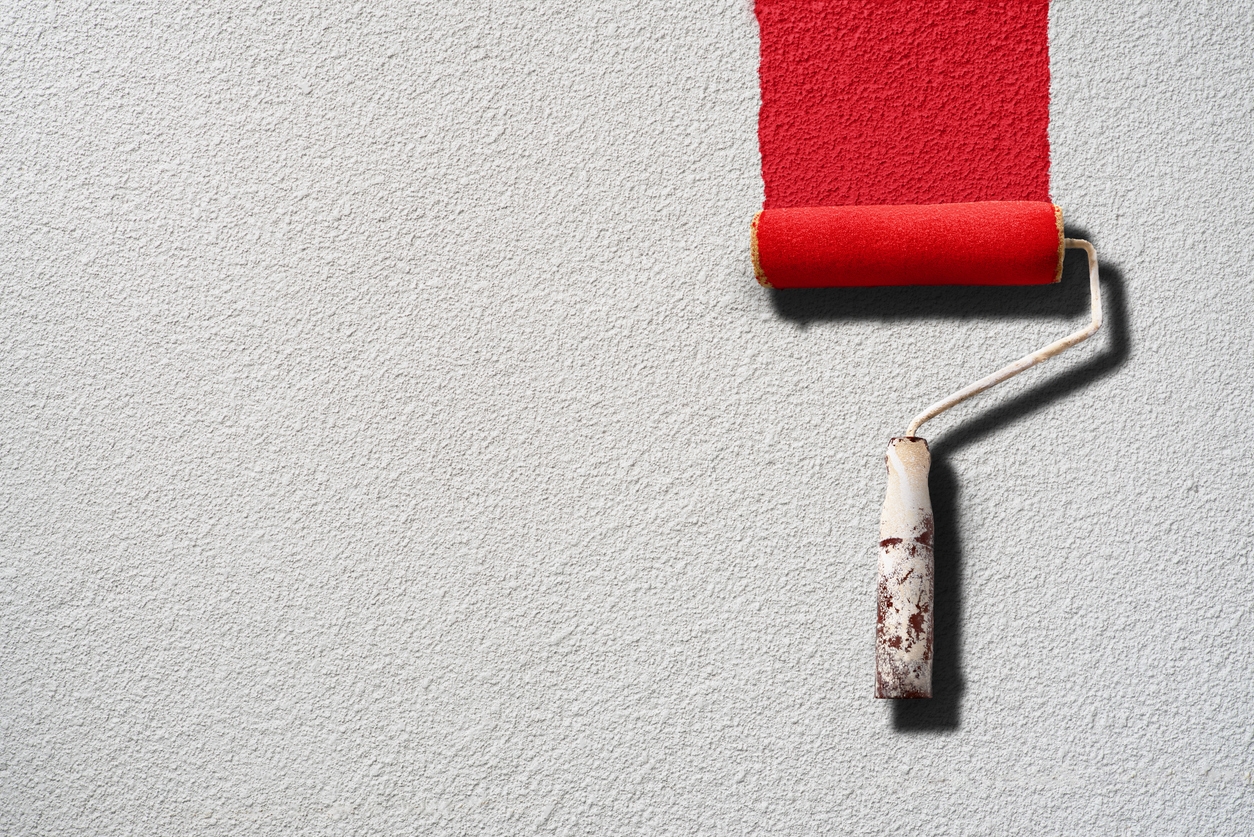Painting textured walls can be a bit challenging, but with the right techniques and tools, you can achieve a beautiful finish. Textured walls add character and depth to a room. However, they require special attention during the painting process. Continue reading below so that we can guide you through the steps to paint textured walls in your home successfully.
The Difficulty of Painting Textured Walls
Painting textured walls can be more challenging than painting smooth surfaces. The texture can make it difficult to get an even coat of paint. The peaks and valleys in the texture can cause the paint to gather in certain areas and leave other areas thin.
Using the right tools is important. A thick-nap roller is better for textured walls as it can hold more paint and reach into the crevices. A brush is also necessary for cutting along edges and corners where a roller cannot reach.
Preparation is key when painting textured walls. The surface needs to be clean and dry. Any dust or debris can get trapped in the texture and cause an uneven finish. Priming the walls can help the paint adhere better and provide a more uniform color.
Another challenge is dealing with drips and splatters. The uneven surface can cause paint to drip more easily. It is important to use steady, even strokes and not overload the roller with too much paint.
All in all, painting textured walls requires patience and careful technique. With the right preparation and tools, you can achieve a professional-looking finish.
Hiring Painters for Painting Textured Walls
Hiring professional painters to paint textured walls can save you time and ensure a high-quality finish. Here are some reasons why you should consider hiring experts for this task.
- Experience: Professional painters have experience with textured walls and know the best techniques to use. Their expertise helps achieve an even and attractive finish.
- Proper Tools: Painters come equipped with the right tools for the job. They use thick-nap rollers, high-quality brushes, and other specialized equipment that can handle textured surfaces.
- Surface Preparation: Preparing textured walls for painting requires thorough cleaning and priming. Professionals ensure the surface is properly prepped, which helps the paint adhere better and last longer.
- Efficiency: Experienced painters can complete the job more quickly and efficiently. They know how to manage the challenges of textured walls and avoid common mistakes that can cause delays.
- Quality Finish: Professionals pay attention to details and use techniques that result in a high-quality finish. They can avoid issues like drips, uneven coverage, and missed spots.
- Safety: Painting textured walls can involve working at heights or in difficult-to-reach areas. Professionals have the training and equipment to do the job safely, reducing the risk of accidents.
- Stress Reduction: Hiring painters takes the stress out of the project. You can relax knowing that skilled professionals are handling the work and delivering great results.
- Cleanup: After painting, a significant cleanup is often required. Professionals take care of all the cleanup, leaving your space tidy and ready to use.
Tips for Painting Textured Walls
If you don’t have the budget to hire professional painters, there are still several strategies that you can apply so that you won’t have a difficult time painting textured walls. Here are some tips to help you paint textured walls effectively.
Choose the Right Tools
Use a thick-nap roller to cover textured surfaces evenly. This type of roller holds more paint and reaches into the crevices of the texture.
Clean the Surface
Make sure the walls are clean and free of dust and debris. You can use a damp cloth to wipe down the walls and let them dry completely before painting.
Use a Quality Primer
Apply a high-quality primer to the walls before painting. Primer helps the paint adhere better and provides a uniform base for the topcoat.
Apply Even Pressure
When using a roller, apply even pressure to avoid drips and streaks. Roll the paint in a “W” pattern to distribute it evenly across the surface.
Cut in with a Brush
Use a brush to cut in along edges and corners where the roller cannot reach. This ensures that all areas are covered and creates a clean, finished look.
Apply Multiple Coats
Textured walls may require more than one coat of paint for full coverage. Allow each coat to dry completely before applying the next to achieve a smooth and even finish.
Use a Spray Gun
For large areas, consider using a paint spray gun. This tool can provide a more uniform application and save time, especially on heavily textured surfaces.
Protect Surrounding Areas
Cover floors, furniture, and other surfaces with drop cloths to protect them from paint splatters. Use painter’s tape to mask off edges and trim.
Work in Sections
Divide the wall into manageable sections and work on one section at a time. This helps maintain a wet edge and prevents lap marks.
Check for Missed Spots
After the paint has dried, inspect the walls for any missed spots or uneven areas. Touch up these spots with a brush or roller to ensure a consistent finish.
Conclusion
Painting textured walls can be a bit more challenging than painting smooth surfaces, but with the right tools and techniques, you can achieve a beautiful finish. By following these tips we provided, you can ensure that your textured walls look great and hold up well over time.
For professional help with painting textured walls, contact Custom Painting, Inc. Call us at 925-866-9610 or fill out our Contact Form.



